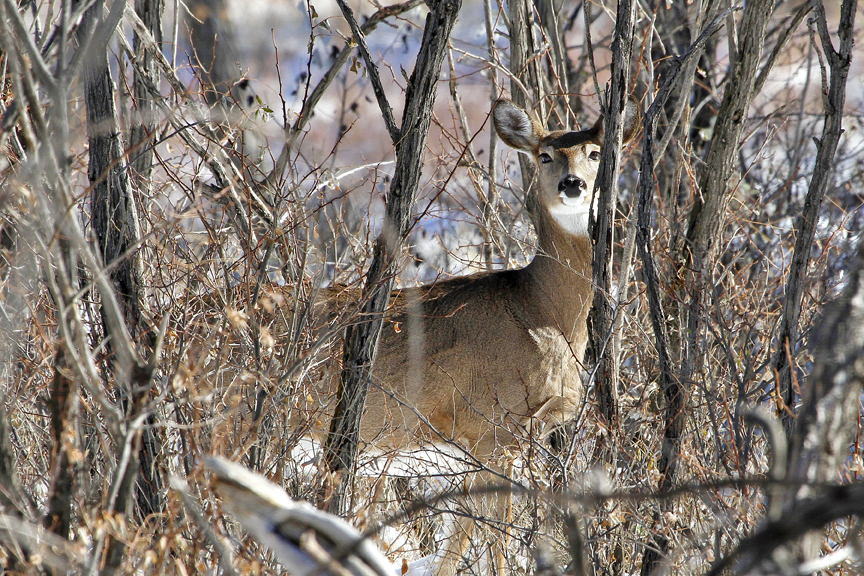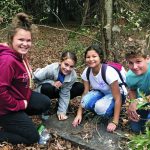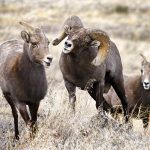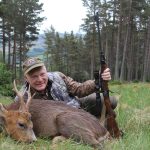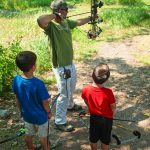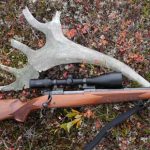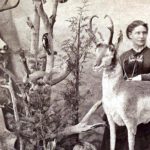The old still-hunter’s mantra is a good lesson for the woods, and for life.
The end of the year is a time to reflect. It’s also a time to take advantage of the wonderful hunting adventures we enjoy here in North America. Depending on where you live, the seasons are either ramping up or winding down, but throughout the continent hunters are stocking their freezers, and their memory banks, with the fruits of this year’s hunts.
Such reflections got me to thinking about a recent experience I had while deer hunting in Pennsylvania, the state where I was born and raised, and where I still return often to try my luck on its exceptionally wily, wary whitetails.
It was a snowy day two Decembers ago, the kind of northern Pennsylvania winter day I remember from my childhood. A couple of feet of soft snow were on the ground, large white flakes drifting gently into my face from the slate-gray sky. There was deer sign all over the ridge top I was on: tracks, droppings, and places where they had pawed through the snow to get to some hidden treat.
It was the second week of the rifle season. I had both a buck and a doe tag in my pocket, and I had been hunting for the better part of the week without filling either of them. I’d seen some deer, but every sighting had played out the same way–tails bouncing away through a maze of tree trunks, or a momentary face-off with an alert brown form that instantly rocketed away.
I was making silent progress through the fresh snow toward the edge of the ridge, where I figured I would stop for a break and look down the other side. As I came over the top, three deer that had been bedded just on the other side exploded practically at my feet like a covey of ruffed grouse, bounding away down the hill and out of sight. I dropped to one knee, searching frantically for a target but finding only gray tree trunks. I lowered the rifle and sighed with frustration.
Sitting down in the snow, I had a drink of water and thought about the week. My lack of success boiled down to a simple fact: The deer were seeing me before I saw them. That meant I had to do two things: one, go slower, and two, see better.
I possessed the means to see better: the excellent high-end binocular hanging around my neck. I thought about the way I normally used it: picking apart a big sage-covered hillside in the West, piece by piece, in hopes of spotting a deer or elk. I rarely used it in the thick northern Pennsylvania woods, where you can barely see fifty yards. It seemed silly. But no sillier than spooking all those deer. I resolved to start glassing as if on a Western hunt, studying everything below me and ahead of me with extreme care.
The other thing I needed to do was slow down. Like most human beings in the modern world, slowing down is not something I’m good at. The old still-hunter’s mantra: “Go as slow as you can, then go slower,” was fine in theory, but I rarely put it into practice. But now I resolved to do so. I shouldered my pack and my rifle, got to my feet, and took a couple of steps. Then I stopped. I glassed ahead and around me. I took two more slow steps. And stopped and glassed again.
My brain screamed at me: This is pointless. You’ve already spooked the deer out of this area. You need to get to a new spot, fast. You need to cover more ground!
I took a deep breath and studiously ignored the doubts. Two silent steps in the soft snow. Stop. Glass carefully.
It took a while, but a strange thing happened. I got into a quiet cadence. My brain settled down. Birds and squirrels went about their business, seeming to take little notice of my presence. I began to feel like a part of the woods instead of an intruder. It had been a long time since I had been able to slow my impatient steps enough to feel this way.
I stopped worrying about what time it was. So I don’t know how far I had silently stolen along the ridge at my glacial pace when, studying the trees below me through the binocular, I spotted an ear.
Just an ear. I swapped binocular for scope and a deer’s head took shape. It was a mature doe, standing stock-still, fifty yards below me, looking straight ahead. It hadn’t seen me.
I watched it for a moment through the scope. I had done it. After a week of spooking every single deer I had encountered, I had turned it around. The ear flicked and the doe turned its head slightly to look down the hill. That snapped me out of my reverie. I dropped the cross hairs to the deer’s chest, slid the safety forward, and pressed the trigger. The boom of my mom’s old .30-06 carbine shattered the snowy stillness.
After reloading and engaging the safety, I made my way down the steep hillside to where the deer had been standing, noting a large splash of bright red in the snow and a toboggan-like trail where the deer had slid down the hillside. At the end of the plowed-up snow, piled up against an old tree stump, was a fine big doe.
I slid down and put my hands on her warm hide. She represented a freezer-load of delicious steaks and chops, but she also meant much more. She had reminded me I did not need to do everything at breakneck speed. I shed my pack and coat, filled out my tag, pulled out my knife, and then sat in the snow for a while, just enjoying the moment, before getting to work. For once, I wasn’t in a hurry.
Enjoy your late-fall adventures, and be sure to take some time this season to slow things down and immerse yourself in the natural rhythm of the woods and fields where you hunt.
Photo copyright Vic Schendel

